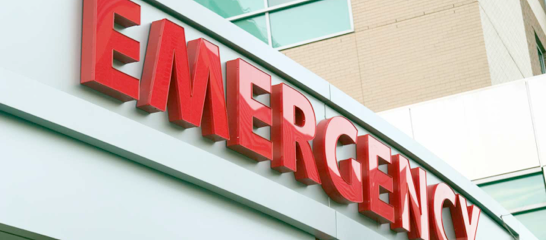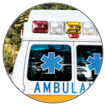








Emergency & First Aid
What Is a Medical Emergency?
A medical emergency means death or serious harm could result without prompt care. Warning signs of a medical emergency include:
-
•Any heart attack warning sign.
-
•Any stroke warning sign.
-
•A hard time breathing or shortness of breath. Not being able to say 4 or 5 words between breaths.
-
•Fainting. Loss of consciousness.
-
•Change in mental status, such as unusual behavior or confusion.
-
•Sudden, severe pain anywhere in the body.
-
•Bleeding that won’t stop.
-
•Vomiting that is severe or that persists.
-
•Coughing up or vomiting blood.
-
•Suicide attempts or gestures. Making plans for suicide. Repeated thoughts of suicide.
Being Ready for Medical Emergencies
-
•Learn basic first-aid skills. Take courses in CPR and first aid. These give hands-on practice in giving first aid and CPR the right way. Find out about them from your local Red Cross, police and/or fire department, etc.
-
•Find out what services your health plan covers and what steps you have to take to get emergency costs paid for.
-
•Carry the following information with you at all times:
-
•Your name, address, phone number, and the person to contact if you need emergency care.
-
•Your health insurance information.
-
•Important medical information. This could be on a medical alert tag, on a wallet card, or on the back of your driver’s license. Have a list of medications, their dosages, and things you are allergic to.
-
•Emergency telephone numbers. (Post these near phones, too.)
-
•Read Emergency Procedures and Emergency Conditions / First Aid to learn what to do for conditions that need emergency medical care and/or first aid.
First-Aid Kit
Keep first-aid supplies handy, but out of children’s reach. Carry a first-aid kit in the car (or boat, wrapped in a waterproof container), as well as in the house. Campers, bikers, hikers, and persons who spend time in remote areas should take a first-aid kit with them. Once a year, check supplies for expiration dates. Restock items when they are used up or when expiration dates have passed. {Note: See also Be Prepared for Disasters & Threats.}
First-Aid Supplies & Medicines
-
•Acetaminophen, aspirin, ibuprofen, etc.
-
•Adhesive bandages of different sizes.
-
•Antibiotic ointment.
-
•Antidiarrheal medicine.
-
•Antihistamine tablets or syrup.
-
•Antiseptic ointment or wipes.
-
•Calibrated medicine spoon & dropper (for kids).
-
•Cold pack.
-
•Cotton-tipped swabs.
-
•Elastic wrap and closures.
-
•Flashlight and extra batteries.
-
•Hydrocortisone ointment.
-
•Safety pins.
-
•Scissors.
-
•Sterile gauze pads, a roll of gauze, and tape.
-
•Sterile nonstick dressings.
-
•Sunscreen (SPF of 15 or higher).
-
•Tweezers.
Add Extra Items for a Car or Boat
-
•Clean, folded sheet. Blanket.
-
•Large flashlight. Extra batteries. Flares. Rope.
-
•Plastic bottle of water, tightly capped.
-
•Protective clothing and footwear.





2012 © All Rights Reserved - American Institute for Preventive Medicine | Disclaimer | Phone: 800.345.2476 | www.HealthyLife.com

